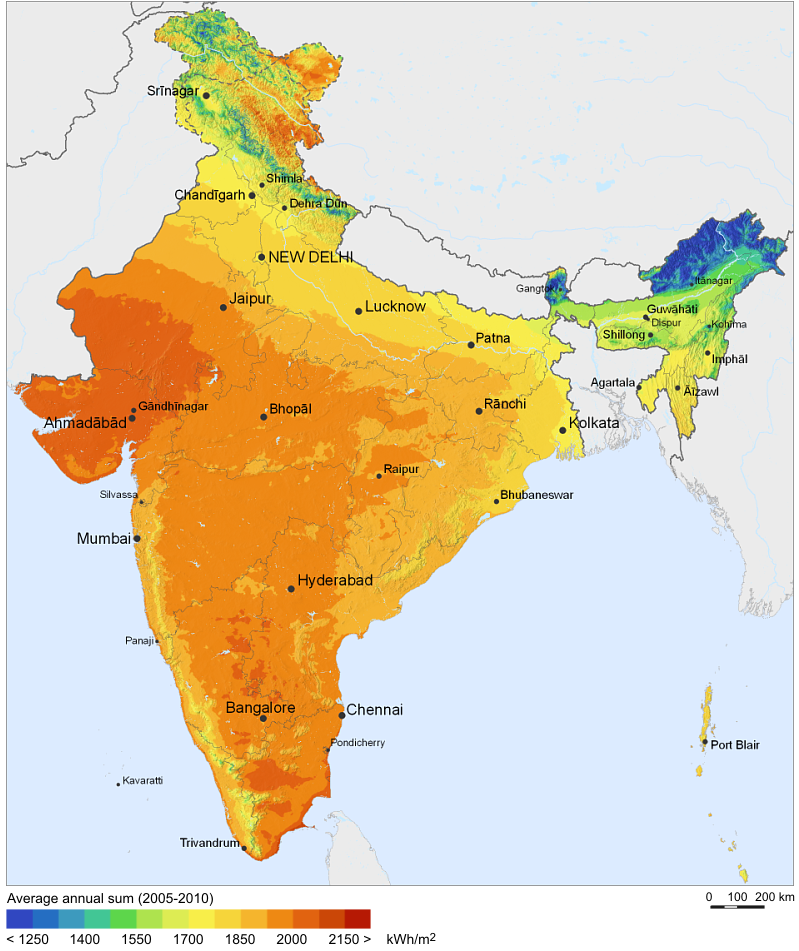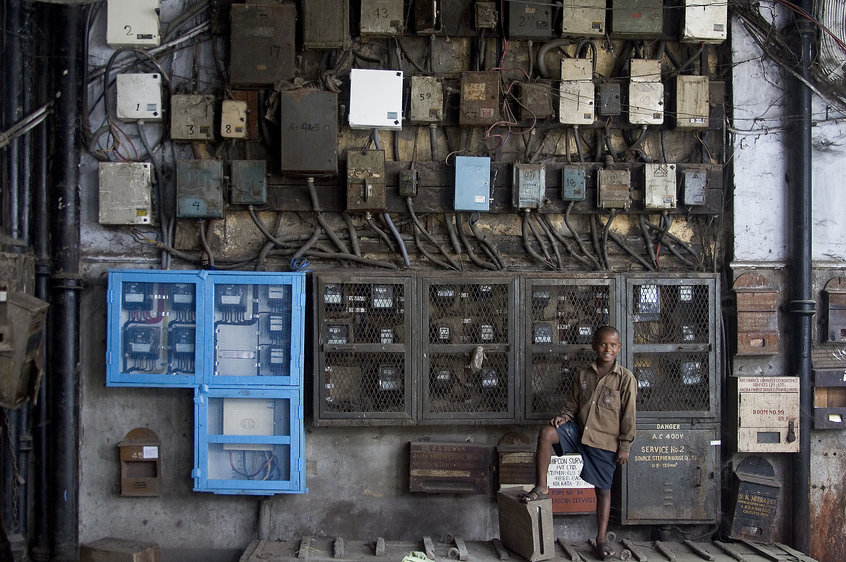The government of Germany is to set up a $1bn fund to expand solar power in India alongside its existing funding of $1.3bn for the development of a “green energy corridor”.
Energy cooperation is very much in the foreground, particularly the exploration and development of rural areas is very much on our agenda– German Chancellor Angela Merkel
The deals were among 18 memorandums of understanding signed by the two governments during Chancellor Angela Merkel’s visit to New Delhi earlier this week. And they are the latest development in what is becoming a long-term clean energy relationship.
Immediately following the talks, Germany’s state-owned development bank KfW signed two loan agreements worth $140m for two projects under the Green Energy Projects (GEC) programme.
The schemes will be in the northern state of Himachal Pradesh and the south-eastern state of Andhra Pradesh.
At the press conference following three-hours of talks on Monday, Merkel commented: “Energy cooperation is very much in the foreground, particularly the exploration and development of rural areas is very much on our agenda.”
India’s Prime Minister Narendra Modi said: “We have agreed on the Indian-German Climate and Renewable Alliance with a long-term vision and a comprehensive agenda of cooperation. I place great value on Germany’s assistance of over €1bn for India’s Green Energy Corridor and a new assistance package for solar projects in India.”
Lost in transmission
The €1bn for the green corridor was not, however, new money. Germany offered it at the inception the plan in 2013, when it agreed to supply technical assistance and $1.3bn in soft credit.

India’s estimated solar generating capacity (Wikimedia Commons)
The aim of the corridor is to create a link that will cross seven states and connect India’s southern and northern electricity distribution grids. This will make renewable energy generated in one state available to all. For example, Tamil Nadu generates about 1.5GW of wind energy, about 35% of India’s total, but has been unable to use much of that during peak hours.
The government of India has allocated $7.9bn to the corridor, which will also receive support from the World Bank, the Asian Development Bank and India’s National Electricity Fund. The scheme is scheduled to be completed in 2018 or 2019.
The scheme is seen as a vital to the country’s economic development. India has to add 15GW a year to its total capacity to keep up with the expected growth in demand, but at the same time it has to upgrade its obsolete transmission network.
At present, it is estimated that about a quarter to a third of electricity generated is lost in transmission.
The dangers of continuing with the present system were demonstrated by the 2012 black-out that left more than 600 million people without power and drew attention to the utility sector’s $70bn of accumulated debt.
As at least 300 million of India’s 1.25 billion live without electricity, and 250 million receive only three or four hours of power a day, the cut affected most of the country’s people.
100GW by 2020
The installation of solar power has become a priority for the Indian government, which is aiming to install almost 100GW of grid-connected generating capacity by 2022, about 36% of its present total capacity. This superseded India’s previous aim of installing 20GW in August.

Electricity meters in a housing block in Kolkata (Wikimedia Commons)
For Germany, the deal will throw a lifeline to its photovoltaic industry, and will provide a guaranteed market for its latest product, which uses semi-conductors rather than silicon to generate electricity. The latest panels increase the conversion efficiency and thereby reduce the amount of land taken up by solar farms.
The German industry has been struggling to compete with Chinese competitors, which have the world’s largest manufacturing capacity and a lower cost base. It now intends to sell integrated assembly lines for the manufacture of the new thin-film semi-conductors.
Main photograph: German Chancellor Angela Merkel arrives for her annual visit (Bundesregierung/Kugler)
Comments
Comments are closed.







It is of note that many of the developed nations are constantly in search of ever more cost efficient and highly effective systems of solar power generation! This is a very healthy endeavour seeking to
lift millions of the world’s impoverished ultimately up to a much more sustainable standard of living!